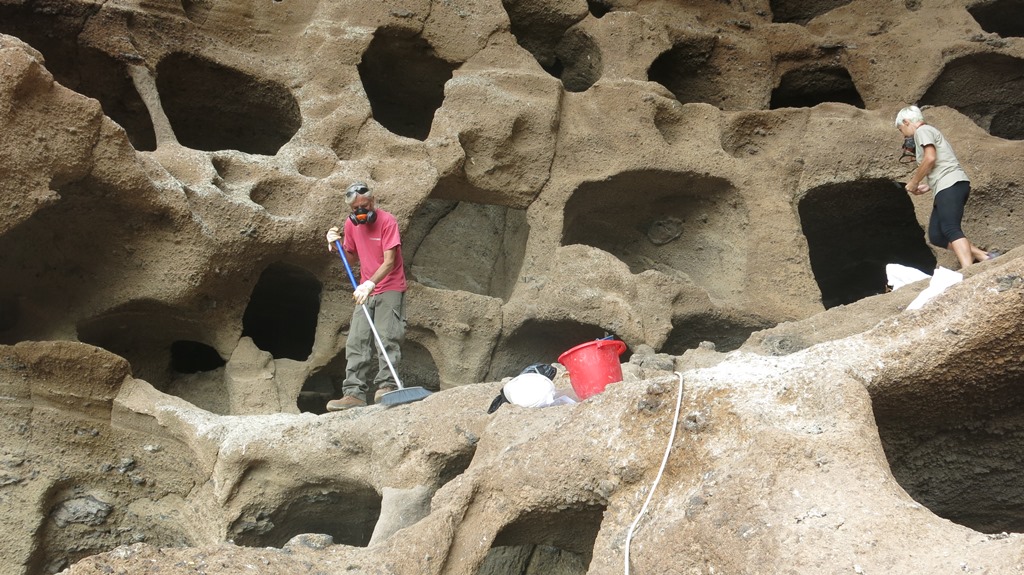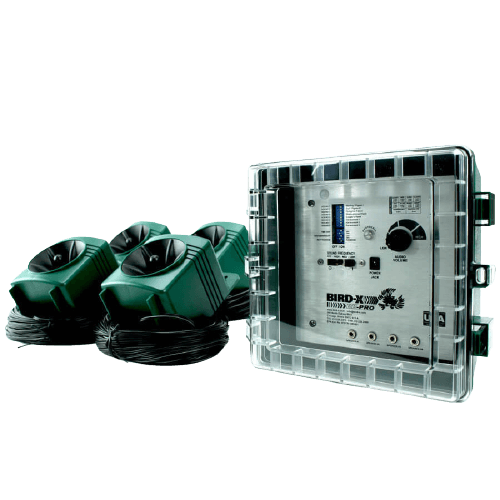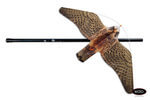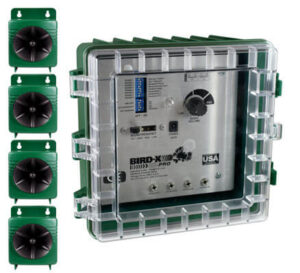We interview Valentín Barroso, director of Arqueocanaria, about the effectiveness of solutions to repel pigeons from the Cenobio del Valerón.
- The Cenobio del Valerón is one of the most emblematic archaeological sites in Gran Canaria. Declared a Site of Cultural Interest. It is a collective granary, consisting of over 300 hollow silos opened in the mountainside, on the side of a volcanic cone.
- Pigeon colonies nested in the silos of the Cenobio. The accumulation of pigeon droppings, feathers, and carcasses posed a serious danger to the conservation of the stone.
- In 2020, Arqueocanaria, the company that manages the site, contacted BirdGard Iberia to implement solutions and repel pigeons.
What are the dimensions of the Cenobio?
The Cenobio is located under a 30-meter-wide by 25-meter-high natural arch. It has more than 300 silos arranged on several levels, making it perfect for pigeons to take refuge and nest in the cavities of the silos.
How long have pigeon colonies been at the Cenobio del Valerón?
More than 13 years ago, funded by the Cabildo de Gran Canaria, Arqueocanaria carried out the first restoration and cleaning work on the site. After this work, the pigeons were removed from the site. However, they soon returned to nest in the area, and since then, that is, since 2009, pigeons have continued to colonize the site gradually.
How many pigeons were in the cave?
It’s difficult to estimate, but the colony was quite large. I would say there were hundreds of pigeons.
Where did the pigeons settle?
In the higher silos or cavities, as well as on the numerous rocky outcrops. This caused the spaces at the bottom, including the access ramp for visitors and the staircase, to be constantly stained by pigeon droppings. In some places, there were piles of pigeon droppings about 30 centimeters high.
What problems did pigeons cause at the Cenobio del Valerón?
The filth from pigeon droppings posed a potential health risk for people. This had to be avoided, as it is a public space.
Additionally, pigeon droppings and their remains (feathers, decomposing carcasses…) caused chemical alterations that were wearing away the stone of the site. This posed a serious danger to its conservation.
The microbial flora of pigeon droppings, not only chemically alters the volcanic tuff due to the corrosive effect of uric and phosphoric acids present, but is also prone to contain potentially dangerous compounds for people.
How was the project to repel pigeons approached?
The Cabildo de Gran Canaria commissioned Arqueocanaria to develop a project to control the pigeon colony at Cenobio and thus prevent the accumulation of droppings, feathers, and decomposing pigeon carcasses.
As a first step, we carried out an in-depth cleaning and disinfection of the site, in order to stop the attack of bacteria and fungi that erode the stone. The work lasted about 4 months. We removed about 800 kilos of pigeon droppings.

In parallel with the cleaning and nest removal, trap cages were placed to capture the pigeons and the occasional help of a falconer to fly a hawk as a deterrent was used.
From our previous experience when we first cleaned the site in 2009, we knew that these initial cleaning and pigeon capture measures were necessary, but not sufficient, to prevent pigeons from returning to the site and re-colonizing it.
On this occasion, we were clear that we needed to implement permanent measures to prevent pigeons from nesting in the site again.
How did you discover Bird Gard repellers?
We searched the internet for leading companies in pigeon control solutions and decided to contact BirdGard Iberia. After a phone conversation to explain our case, they recommended combining different solutions to repel pigeons from the site.
What solutions did BirdGard Iberia recommend for repellings pigeons?
They recommended combining different types of pigeon control solutions. They pointed out that using a combination of different solutions produces a synergistic effect that improves overall effectiveness in controlling pigeons. And indeed, that was the case.
Specifically, they recommended the installation of:
- The Bioacoustic and Ultrasonic repeller “BroadBand Pro” which emits ultrasounds that are very annoying to pigeons and sounds of birds of prey that scare them.
- A Visual deterrent in the form of a kite that simulates a hawk’s flight, which we placed at the entrance of the site.
- The AviFin Gel, which we placed in strategic points, in the highest silos and galleries of the site to reinforce these key points and prevent pigeons from perching there.



In this video, we can see the hawk kite and hear the sounds emitted by the bioacoustic repellent BroadBand Pro.
How have you programmed the BroadBand Pro? Where have you installed the speakers?
The BroadBand Pro repeller is programmed to emit the sounds of birds of prey every 20 minutes, 24 hours a day. The ultrasonic sounds are operational all the time.
During the pandemic, the site has been closed to tourists. It has now reopened. When tourists hear the sounds of birds of prey emitted by the BroadBand Pro, they really like it! They ask us if there is a kestrel or an eagle around the cave because they hear their calls. Being in a natural environment makes the site even more attractive!
More than two years after the installation of the pigeon repellers, how have the results been?
It has been a complete success. Even better than we expected. We had a real test with the pandemic.
For many months, the site was closed to tourists and no one was there. Once the lockdown was over and we were able to visit again, we feared that the pigeons might have resettled in the Cenobio, but that was not the case. The solutions we implemented worked perfectly and, even though there was no human presence at the site for months, the deterrents did their job and the pigeons have not returned to the area.
In short, the solution BirdGard Iberia advised us to prevent pigeons from nesting in the site has worked wonderfully. We are very satisfied. We have managed to prevent corrosion of the site’s stone and ensure that there are no health risks for the visiting public.
Would you recommend this pigeon deterrent solution?
Of course, I recommend it!
I see that people mainly use the typical anti-pigeon spikes, which besides being completely unattractive, do not yield good results. Moreover, their installation in places like the Cenobio would be totally unfeasible, as it would involve covering the entire surface with spikes.

